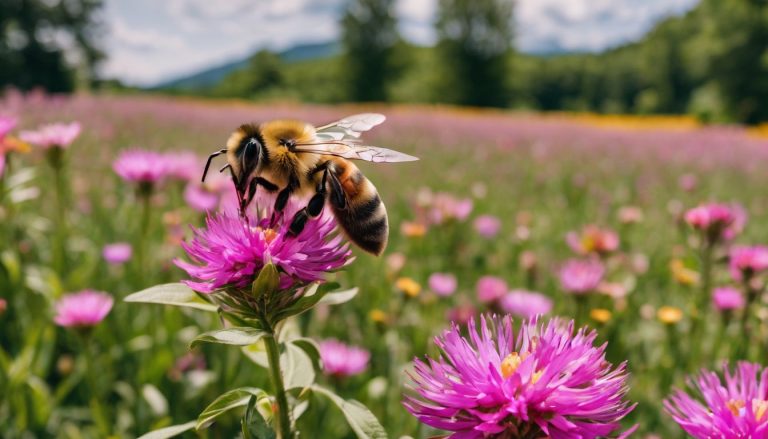What Are Pheromones: A Comprehensive Guide to Chemical Messengers in Humans and Animals
Ever wondered why certain scents can instantly grab your attention? Pheromones, those invisible chemical messengers, are at work all around us, from the animal kingdom to possibly even our own interactions.
This guide will delve into the mysterious world of pheromones, exploring their secret roles in behavior and communication. Get ready for an eye-opening journey into the science of scent!
Key Takeaways
- Pheromones are chemical signals that organisms release to communicate and influence the behavior of others in their species, playing a critical role in mating, territory marking, and danger signaling.
- There are three main types of pheromones: releaser pheromones which trigger immediate behaviors; primer pheromones which affect development and hormonal changes; signal pheromones which convey information about an individual or environment.
- Pheromone receptors located in the nose detect these chemical messages, leading to behavioral or physiological responses integral to social interaction among animals and potentially humans as well.
- While there is debate over human sensitivity to pheromones, some research suggests they can impact mood and sexual attraction with implications for developing consumer products like perfumes.
- Applications of synthetic pheromones include pest control through trapping methods in agriculture, enhancing reproductive practices in animal husbandry, and exploring their use in personal care products aimed at influencing human behavior.
What Are Pheromones?
Pheromones are chemical signals that play a key role in communication and behavior among humans and animals. They can be found in sweat, urine, semen, breast milk, and other bodily fluids.
Definition and functions
Pheromones are specialized chemical signals released by organisms into the environment, triggering a social response in members of the same species. These scent molecules play a critical role in communication chemicals among animals and potentially humans, aiding in behaviors like mating, marking territory, and signaling danger.
They bridge the gap between individuals through olfactory cues; an invisible yet powerful form of interaction.
Through secretions such as sweat or urine, these signal molecules impact reproductive behavior and can alter hormonal responses within others of their species. Insects use them to lead others to food sources or away from threats.
Animals rely on pheromones to manage social hierarchies and identify kin. While debates continue over their effects in humans, evidence suggests they may influence mood, sexual attraction, and other areas of human physiology and social interaction.
Evolution of pheromones
After understanding the definition and functions of pheromones, it is crucial to explore their evolution. Pheromones have been a part of animal communication for millions of years, playing a fundamental role in shaping reproductive behavior and social interaction.
As organisms evolved, so did their need for efficient communication within species. Evolutionary processes led to the development of chemical signaling through pheromones as an adaptive mechanism to ensure survival and successful mating strategies.
Through natural selection, organisms that could effectively produce and respond to pheromones gained a significant advantage in attracting mates and establishing social bonds. Over time, this evolutionary trait became deeply ingrained in various species as an essential tool for conveying important information such as territory marking, alarm signals, and sexual attraction.
Types of Pheromones
Pheromones are categorized into three main types: releaser pheromones, which elicit an immediate behavioral response; primer pheromones, which have long-term physiological effects; and signal pheromones, which convey information about the individual or species.
Understanding these different types helps us grasp the complexity of chemical communication in both humans and animals.
Releaser pheromones
Releaser pheromones, found in various species including humans and animals, trigger an immediate response upon detection. These chemical signals prompt specific behaviors or reactions, such as sexual attraction or alarm signals.
For instance, when a bee stings, it releases a pheromone that alerts other bees to attack the intruder. Likewise, human babies produce releaser pheromones in their mother’s breast milk which induces bonding and affection.
In animals and insects alike, releaser pheromones play a role in communication, mating behavior and socio-sexual interactions. Certain studies suggest that these chemical messengers could potentially influence mood and social behavior in humans too.
Primer pheromones
Moving from releaser pheromones, we move on to primer pheromones. These types of pheromones have a longer-term effect and can influence physiology and development, rather than triggering immediate behavioral responses.
Primer pheromones play a crucial role in modulating the endocrine system, affecting reproductive cycles, hormone levels, and other physiological functions in both animals and humans.
These chemical messengers are involved in regulating developmental processes such as puberty timing or synchronizing estrous cycles among female organisms.
Primer pheromones exert their effects by influencing gene expression or altering hormonal balance within the body. In some animal species, exposure to primer pheromones early in life can significantly impact adult reproductive behaviors and social interactions.
Signal pheromones
Signal pheromones are specific chemical messengers that convey information about territory, food trails, and alarm signals among members of the same species. Secreted by animals through various bodily fluids like sweat and urine, these pheromones play a crucial role in social communication and coordination within animal groups.
Examples include bees using pheromones to mark the entrance to their hive or dogs leaving scent marks to establish boundaries. Signal pheromones also help individuals coordinate activities such as hunting or mating, contributing to overall group cohesion and cooperation.
In addition to animals, signal pheromones have been found in some plants as well. These chemicals allow plants to communicate with each other regarding threats from pests or changes in environmental conditions.
How Do Pheromones Work?
Pheromones work by binding to specialized receptors in the nose or other sensory organs, triggering specific behavioral or physiological responses. They play a crucial role in communication and social interactions among both humans and animals.
Pheromone receptors
Pheromone receptors are specialized cells in the nose that detect pheromones, chemical signals that trigger behavioral responses in animals. These receptors are part of the olfactory system and play a crucial role in processing olfactory signals related to social cues and communication.
When airborne pheromones enter the nasal cavity, they bind to these receptors, initiating a cascade of neural events that ultimately influence an individual’s behavior or physiology.
These receptors are finely tuned to detect specific types of pheromones, such as releaser or primer pheromones, allowing organisms to respond appropriately to different chemical cues from their environment.
Role in communication and behavior
Pheromones play a crucial role in communication and behavior among animals, serving as social signals that convey information about territory, mating availability, and alarm. These chemical messengers are released through sweat and scent glands, influencing the behavior of others within the same species.
For instance, in many insects, pheromones are used to communicate messages related to food sources or danger. In mammals, including humans, pheromones may affect mood and sexual attraction due to their impact on physiological responses.
The presence of pheromone receptors is key in interpreting these chemical cues. Pheromone receptors facilitate the reception of these signals by specialized cells located in the nasal cavity and other parts of the body.
Pheromones in Humans
– Controversies and debates surround the existence of pheromones in humans, with some studies suggesting potential effects on mood and sexuality.
Controversies and debates
Controversies and debates surround the existence and role of pheromones in humans. The argument centers on whether humans produce and respond to these chemical signals, as well as their potential effects on mood and sexuality.
Some studies suggest that certain substances can influence human behavior, while others remain skeptical about the actual presence of pheromones and their impact.
Potential effects on mood and sexuality have sparked discussions regarding the use of pheromones in products such as perfumes. Whether these applications truly harness the power of chemical messengers remains a topic of ongoing debate among researchers and consumers alike.
Potential effects on mood and sexuality
Despite ongoing debates and controversies, the potential effects of pheromones on mood and sexuality have been a subject of significant interest. Research suggests that pheromones can influence mood by triggering specific emotional responses in humans and animals.
Furthermore, certain types of pheromones are believed to play a role in sexual attraction and behavior, affecting mating patterns and partner selection. These chemical messengers may also impact social interactions and communication between individuals, potentially influencing human behavior at an instinctual level.
Pheromones have been reported to affect women’s mood and sexuality, with evidence suggesting that they play a role in regulating hormonal activity related to fertility and reproductive behaviors.
Applications of Pheromones
Pheromones have practical applications in various fields, including insect pest control through pheromone trapping and the use of pheromones in animal husbandry. There is also growing interest in the potential for human use and products related to human pheromones.
Pheromone trapping
Pheromone trapping involves using chemicals to attract and capture insects, particularly pests. This method is widely used in agriculture to monitor and control insect populations without the need for harmful chemical pesticides.
For example, pheromone traps are employed to detect the presence of specific pests like moths and beetles in crops by luring them with synthetic pheromones that mimic those produced naturally by the insects.
Once attracted, the pests become trapped, allowing farmers to assess their numbers and take targeted measures to manage their impact on crops.
Use in animal husbandry
Animals in agriculture can benefit from the use of pheromones to influence behavior and mating. Pheromones are often used to regulate estrus synchronization, enhance reproductive efficiency, and manage animal stress.
In dairy farming, synthetic pheromones are employed to stimulate milk let-down during milking. These applications have shown promising results in helping optimize breeding programs and improve overall animal welfare.
Understanding the role of pheromones in animal husbandry offers potential for advancing agricultural practices and enhancing productivity while ensuring the well-being of livestock.
Human use and potential products
Humans have explored the potential use of pheromones in products like perfumes and colognes. Companies have developed synthetic pheromone-based fragrances to potentially influence mood and attraction.
Research continues into the effectiveness of these products and their impact on human behavior. Some studies suggest that certain pheromone-infused products might affect social interactions, but more research is needed to fully understand their potential effects.
Furthermore, some companies are also exploring the potential application of pheromones in other consumer products such as cosmetics, lotions, and oils. These businesses aim to tap into the alleged connection between certain chemical signals and human behavior.
Conclusion
In conclusion, pheromones play a vital role in human and animal communication. These chemical messengers trigger physiological and behavioral responses, serving as powerful tools for social interaction.
Exploring the complexities of pheromones enhances our understanding of their impact on mood, sexuality, and overall behavior. The evolving research on pheromones opens new possibilities for potential applications across various fields.
Understanding the significance of these chemical signals broadens our knowledge of the intricate ways organisms interact within their environments.
FAQs
1. What exactly are pheromones?
Pheromones are special chemicals that humans and animals release to send messages to one another, influencing behavior and communication.
2. Can other people or animals actually smell pheromones?
Yes, even though we often don’t notice them consciously, both humans and animals can detect pheromones and respond to them instinctively.
3. Do pheromones in humans work the same way as in animals?
The basic idea is the same: they’re chemical messengers used for communication. However, human responses may be more subtle compared with some animal reactions influenced by pheromones.
4. How do scientists study these invisible signals?
Researchers analyze how living creatures behave differently after being exposed to certain chemical messengers like pheromones and look for changes in their biological processes.









